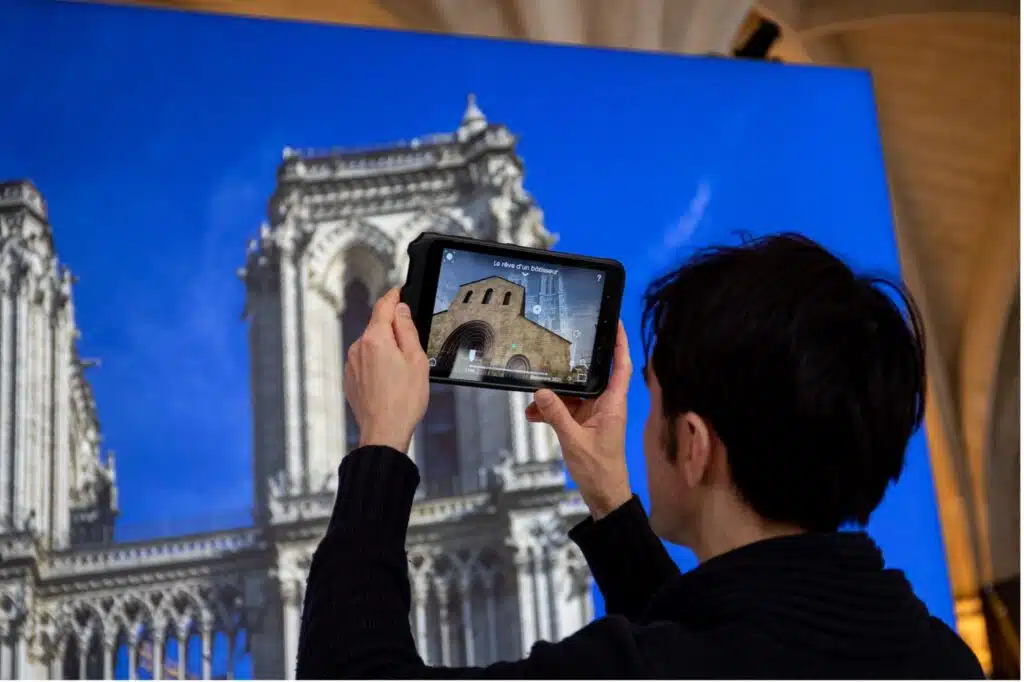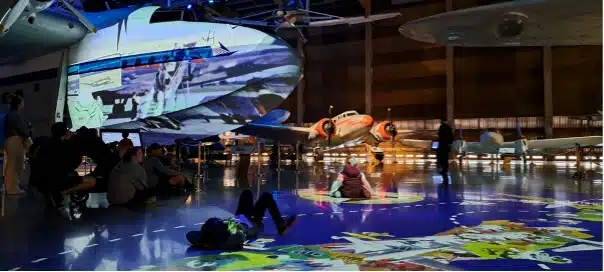Educating Beyond the Classroom: The Best of Digital in the Museums + Heritage Awards 2024
Educating Beyond the Classroom: The Best of Digital in the Museums + Heritage Awards 2024
From Business Development Manager for Education, Ethan Campbell
At a glittering ceremony in London, the 2024 winners of the Museums + Heritage Awards have been announced, and the results are a must-read for anyone working in education who is looking for a world-class experience outside the classroom to inspire their students. The list of winners, and the wider shortlist of nominees, is packed with top innovators and must-see attractions from around the globe that have been recognised by the sector’s most highly-anticipated awards of the year.
The Museums + Heritage awards acknowledge innovation in museums, galleries, archives, and culture and heritage organisations from around the globe, both digital and in person. Experienced educators will understand the huge role that museums and heritage centres play as essential extensions of education, enriching the academic journey by providing dynamic learning experiences that deepen understanding and inspire further exploration.
Pufferfish spherical display technology is used by attractions around the world to fascinate visitors and educate them on a range of awe-inspiring subjects. Our displays have been integrated with cutting edge exhibits in some very innovative ways, and we love to keep an eye on other creators of immersive and interactive digital experiences in the museums sector, keeping ourselves and our clients ahead of the curve. Though the winner may take it all, the wider shortlist is a trove of inspiration for us and our clients. Read on to discover which nominees caught our attention this year.

Two standout categories for the team at Pufferfish are ‘Best use of digital – International’ and ‘Best use of digital – UK’, in which we consistently see projects make creative use of cutting edge technologies wherever they can enhance the immersive storytelling experience. The shortlist included a combination of in-person immersive exhibits that provide an engaging experience for audiences on the ground, but also digital experiences and resources that make collections more accessible for audiences who cannot otherwise visit in person. By leveraging cutting-edge technologies and digital resources, these shortlisted institutions enhance the traditional classroom experience, enabling students to interact with captivating narratives and gain a deeper understanding of diverse subjects.
Coming top in the category of ‘Best use of digital – International’ was the Museum of Transport and Technology (MOTAT) New Zealand, for Stories from the skies: Te Kōtiu. Te Kōtiu is a Māori word meaning ‘to swoop’, and is the title for a groundbreaking project showcasing key moments in aviation with stunning immersive digital projection, with a vibrant mix of video, animation, oral storytelling and soundscape. Drawing on images, artefacts and footage held in the collection, the exhibition features manu aute kites by celebrated Māori artist Nikau Hindin, and the voices of trailblazing wahine toa, or warrior women, in the aviation and aerospace industry today. This is an inspiring example of cutting-edge projection technology being used to enhance storytelling in a way that allows the subject’s voices to be heard most clearly.
The wider category showcased a range of stories from around the globe, touching on architectural and religious history, music and social history. Also shortlisted was the immersive touring exhibition Notre Dame de Paris, The Augmented Exhibition from Histovery has allowed 300,000+ visitors worldwide to trace the 850 year history of the iconic cathedral and its ongoing tradition, with the help of an augmented reality touch-screen tablet. This authentic use of a new technology is especially vital while the Notre Dame is closed to visitors and restoration work continues to return this beloved cathedral to its former glory.
In collaboration with Odense City Museums and experience design agency Event, Copenhagen University is now home to an immersive visitor experience at the Carl Nielsen Museum. This is a place where people can feel and experience the music as a living force, capturing the same playfulness, curiosity and elements of surprise that are characteristic of Carl Nielsen and his work.
The Book of Kells Experience at Trinity College Dublin offers another stunning immersive experience, filled with stories, sights and sounds. An awe-inspiring reconstruction of the Long Room library chamber allows visitors to see both the past and the future through breathtaking digital projections, and Book of Kells 360 presents the 1,200 year old manuscript through an immersive voyage of light and sound.
Also shortlisted in the category of ‘Best use of digital – International’ was the UNBOXING Live Museum from the Museum of Abandonment, Romania, a digital museum that offers a historical narrative on the phenomenon of child abandonment and institutionalisation in Romania. The exhibition includes an immersive experience into the history of the Sighet Home Hospital for Juveniles; abandoned twenty years ago, the hospital has been digitally preserved through 3D scanning and is one of the most sophisticated VR productions in Eastern Europe.

The winner in the category of ‘Best use of digital – UK’ was Dive the Mary Rose 4D from The Mary Rose Trust, a true example of how digital technologies can be leveraged to allow audiences to experience history in ways never before possible. This immersive exhibition showcases the untold story of finding, excavation and recovery of the Mary Rose, through unseen footage brought to life through the smells, sounds and movement from the raising. With 3D glasses and CGI leveraged to optimise the experience, visitors can expect to have their senses captivated.
The wider category included a vibrant range of digital exhibits that focused on making collections more accessible, and for delivering resources that inspire younger generations. Such projects are particularly valuable for use in the classroom, for when travel to the museum or attraction is not possible.
Virtual university museum, The Uncertain Space, from the University of Bristol Cultural Collections, delivers a unique way to experience artefacts from many different collections in one space, and makes the collections accessible to a wider student audience. Meticulous curation encourages visitors to discover new connections between disparate items ranging from a 3D scan of a crocodile skull to a Victorian magic lantern slide.
Among other online resources shortlisted in this category was The National Portrait Gallery’s Schools hub, featuring more than 150 newly commissioned resources and videos designed to support Art & Design and History teaching through portraiture. In addition, the Victoria and Albert Museum was also recognised for its content-rich interactive website, mused, which invites children to explore the V&A’s world of art, design, performance and creativity through quizzes, challenges, and articles.
Concluding this category was Sancho’s Journey – Decolonising heritage sites using mixed reality performances from English Heritage, Brunel University, London and University of Essex, a cross-Atlantic collaboration which delivers immersive heritage performances focusing on underrepresented stories of the 18th century transatlantic slave trade.
As we continue to explore the limits of immersive and interactive experiences with many clients in the museum sector, at Pufferfish we always look forward to the Museums + Heritage Awards, and this year is no exception. Though we can only spotlight a few of those awarded and shortlisted, and our focus is very much on those organisations who are pushing the boundaries of how digital can enhance the learning experience, we send our congratulations to all winning and shortlisted organisations and projects. This recognition is undoubtedly the work of hard work, passion and innovation, and the shortlist truly represents the best of what is being achieved in the museums and heritage sector today.
If you have any thoughts on the Museums + Heritage Awards 2024, or if you’re interested in bringing touch-enabled spherical displays into your educational environment, then – as specialist business development manager at Pufferfish for the educational sector – I’d love to hear from you. Get in touch via social media, or this contact form.